BY SIMON VEAZEY
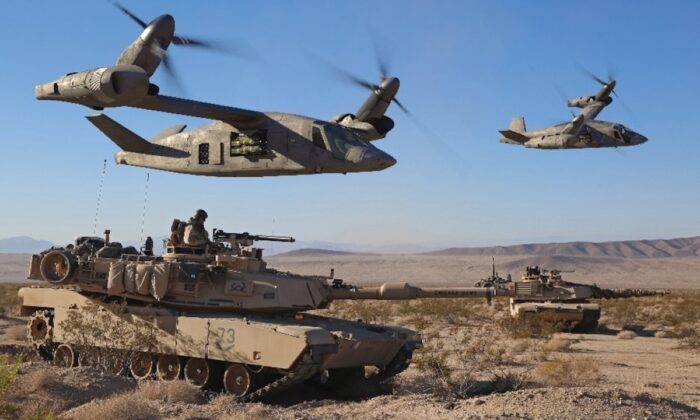 As the U.S. Army hunkered down for the war on terror, phrases such as “counter-insurgency” and “IEDs” became familiar to most Americans, along with the “shock and awe” introduced during the earlier Gulf War.
As the U.S. Army hunkered down for the war on terror, phrases such as “counter-insurgency” and “IEDs” became familiar to most Americans, along with the “shock and awe” introduced during the earlier Gulf War.
But now, if Army modernizers have read the runes right, two new phrases are set to dominate the future of U.S. warfare: “multi-domain operations” and “great power competition.”
Those ideas lie at the heart of the 16-year Army Modernization Strategy recently published by the newly minted Army Futures Command.
As the U.S. Army mastered the art of counter-insurgency on the dusty plains of Helmand Province and the streets of Baghdad’s Green Zone, and the world entered the age of the iPhone, China and Russia were working on ambitious strategies that harnessed the latest technology from the ground up.
In the past 15 years, China quietly tripled its annual military spending to an estimated $200 billion, with a clear focus on leveraging the latest developments such as artificial intelligence (AI), cloud computing, and hypersonic missiles to unbalance the U.S. military.
Spurred by the Trump administration’s 2017 National Security Strategy that followed years of murmurings by defense hawks, the military is now scrambling to catch up, with many analysts saying the United States had been asleep at the wheel after the end of the Cold War.
One of the organizations charged with meeting the challenge of this renewed “great power competition” is the Army Futures Command (AFC), created in 2018 to drive what is described by many analysts as the biggest reorganization in 45 years. But the AFC isn’t simply about feeding new ideas and priorities into the previous 20-year acquisitions cycle. The AFC is the recognition that the rapid pace of tech development requires forging a new approach that melds the spirit of the light-footed tech start-up with military discipline and strategy.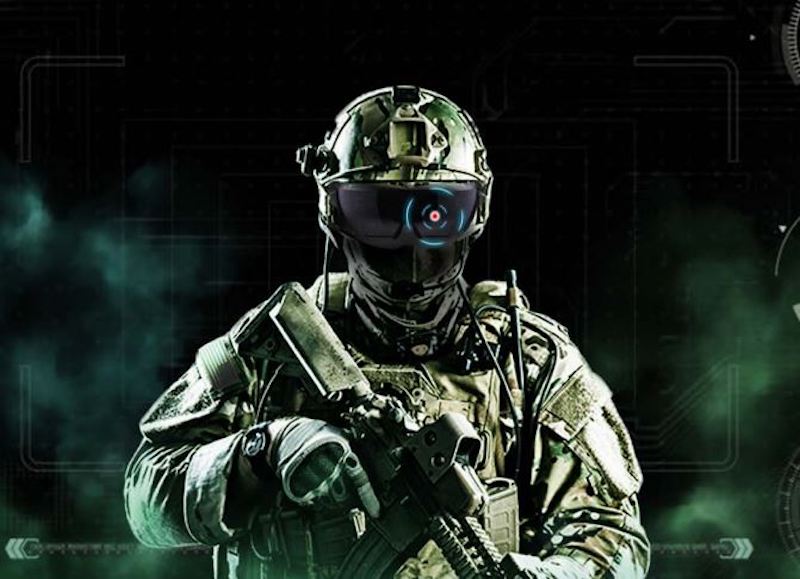 An army handout image of a future soldier. (Department of Defense)
An army handout image of a future soldier. (Department of Defense)
 An army handout image of a future soldier. (Department of Defense)
An army handout image of a future soldier. (Department of Defense)
On Oct. 16, the AFC published its 12-page modernization update, fleshing out its strategy with a 16-year timetable and a clear emphasis on the new operational concept: multi-domain operations (MDOs).
Multi-Layered Standoff
“Multi-Domain Operations is the Army’s operating concept that was approved last year by the Chief of Staff in October and then published in the document in December,” Col. Eric Smith, the author of the 2019 Modernization Strategy, told The Epoch Times.
“It describes how the Army is going to operate in the future in the five domains of land, sea, air, space, and cyber.”
MDOs aim to slice through what is known as a multi-layered standoff.
A multi-layered standoff can be visualized as concentric defensive rings radiating from an adversary’s position, Smith said, starting with the traditional artillery range to longer-range artillery on the inside, going outward to surface-to-surface, surface-to-air, and air-to-air missiles.
Reaching beyond those are extra layers: electronic warfare, unconventional warfare, cyber warfare, and information warfare.
“Surface-to-air missiles, cruise missiles, surface-to-surface … that’s all the familiar kinetic effect that we understand,” said Smith. “[But] look at what Russia’s doing in terms of information warfare, in terms of cyber warfare—they’re attempting to disrupt our operations before we even get within range of the kinetic effects.”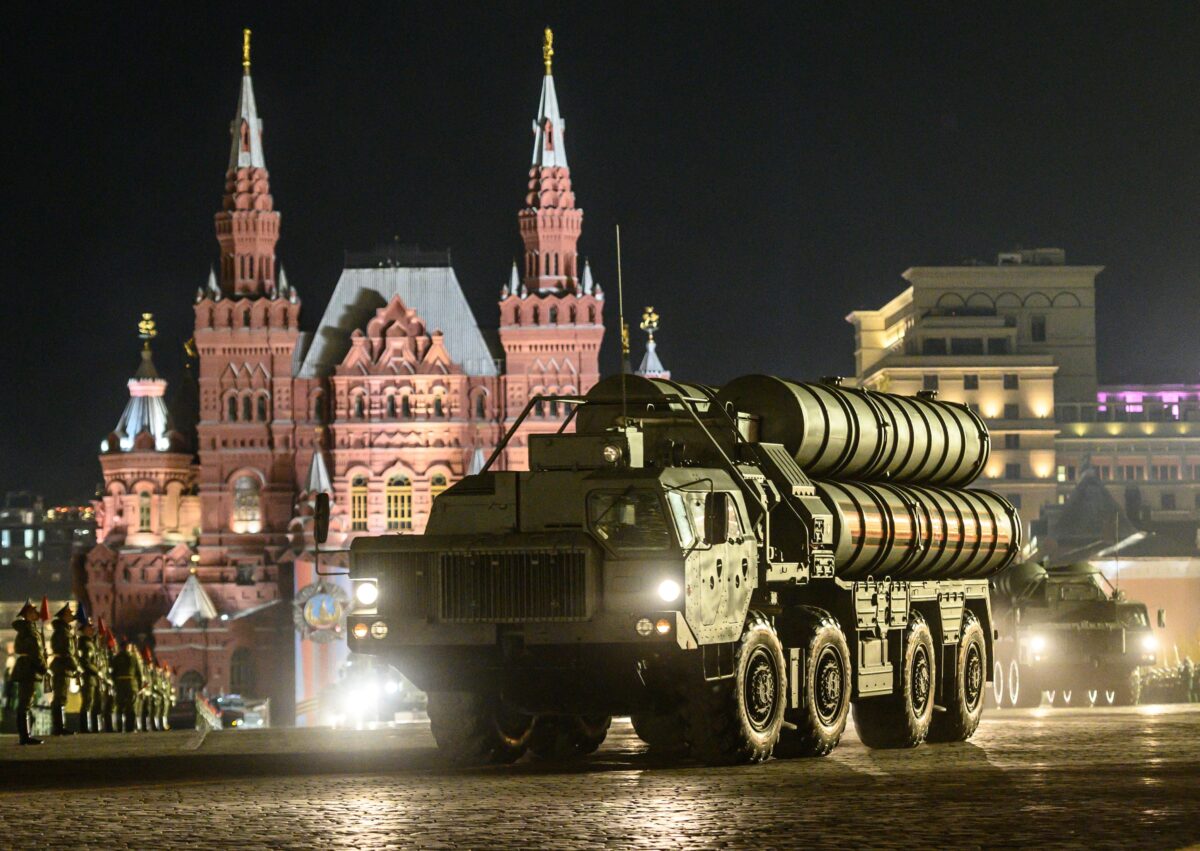 Russian S-400 Triumf surface-to-air missile launchers in Moscow on May 4, 2019. The S-400 missile, stationed at key locations in a line from the Arctic down to Syria form part of Russia’s multi-layered standoff capabilities. (Mladen Antonov/AFP via Getty Images)
Russian S-400 Triumf surface-to-air missile launchers in Moscow on May 4, 2019. The S-400 missile, stationed at key locations in a line from the Arctic down to Syria form part of Russia’s multi-layered standoff capabilities. (Mladen Antonov/AFP via Getty Images)
 Russian S-400 Triumf surface-to-air missile launchers in Moscow on May 4, 2019. The S-400 missile, stationed at key locations in a line from the Arctic down to Syria form part of Russia’s multi-layered standoff capabilities. (Mladen Antonov/AFP via Getty Images)
Russian S-400 Triumf surface-to-air missile launchers in Moscow on May 4, 2019. The S-400 missile, stationed at key locations in a line from the Arctic down to Syria form part of Russia’s multi-layered standoff capabilities. (Mladen Antonov/AFP via Getty Images)
“For us to be able to mitigate this effect, we have to be able to operate in all five domains simultaneously, so they cannot mass against us.”
6 Technology Priorities
The 2018 Army modernization plan prioritized six key areas of new military equipment to tackle the multi-layered standoff: vertical lift, long-range precision fires, missile defense, network, next-generation armored vehicles, and soldier lethality.
“Vertical lift” is the creation of the next-generation answers to helicopters, both manned and autonomous.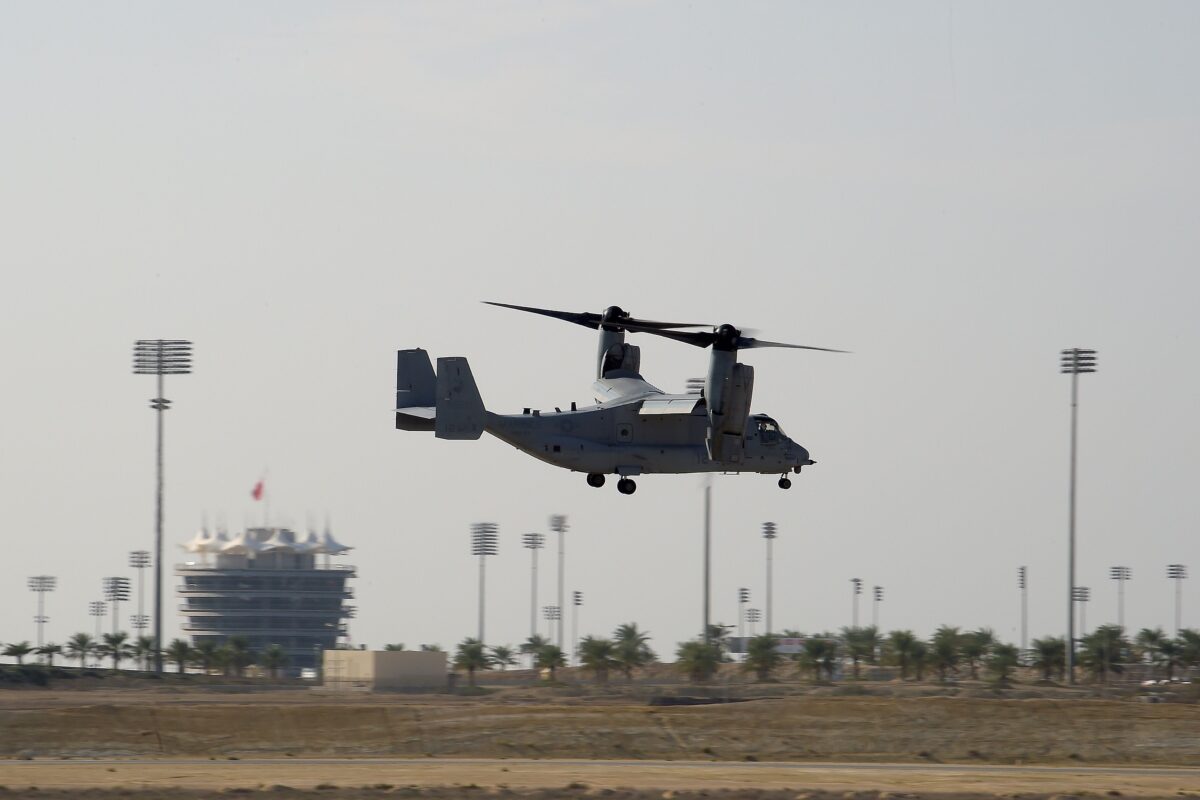 A US Marine Corps (USMC) Bell Boeing V-22 Osprey tiltrotor military aircraft performs air maneuvers during the 2018 Bahrain International Airshow at the Sakhir Airbase, (STR/AFP via Getty Images)
A US Marine Corps (USMC) Bell Boeing V-22 Osprey tiltrotor military aircraft performs air maneuvers during the 2018 Bahrain International Airshow at the Sakhir Airbase, (STR/AFP via Getty Images)
 A US Marine Corps (USMC) Bell Boeing V-22 Osprey tiltrotor military aircraft performs air maneuvers during the 2018 Bahrain International Airshow at the Sakhir Airbase, (STR/AFP via Getty Images)
A US Marine Corps (USMC) Bell Boeing V-22 Osprey tiltrotor military aircraft performs air maneuvers during the 2018 Bahrain International Airshow at the Sakhir Airbase, (STR/AFP via Getty Images)
Next-generation armored vehicles include potentially autonomous vehicles, directed energy weapons, and next-generation armor.
Long-range precision fires is about creating new missiles and artillery to outmatch the longer reach of current Chinese and Russian systems.
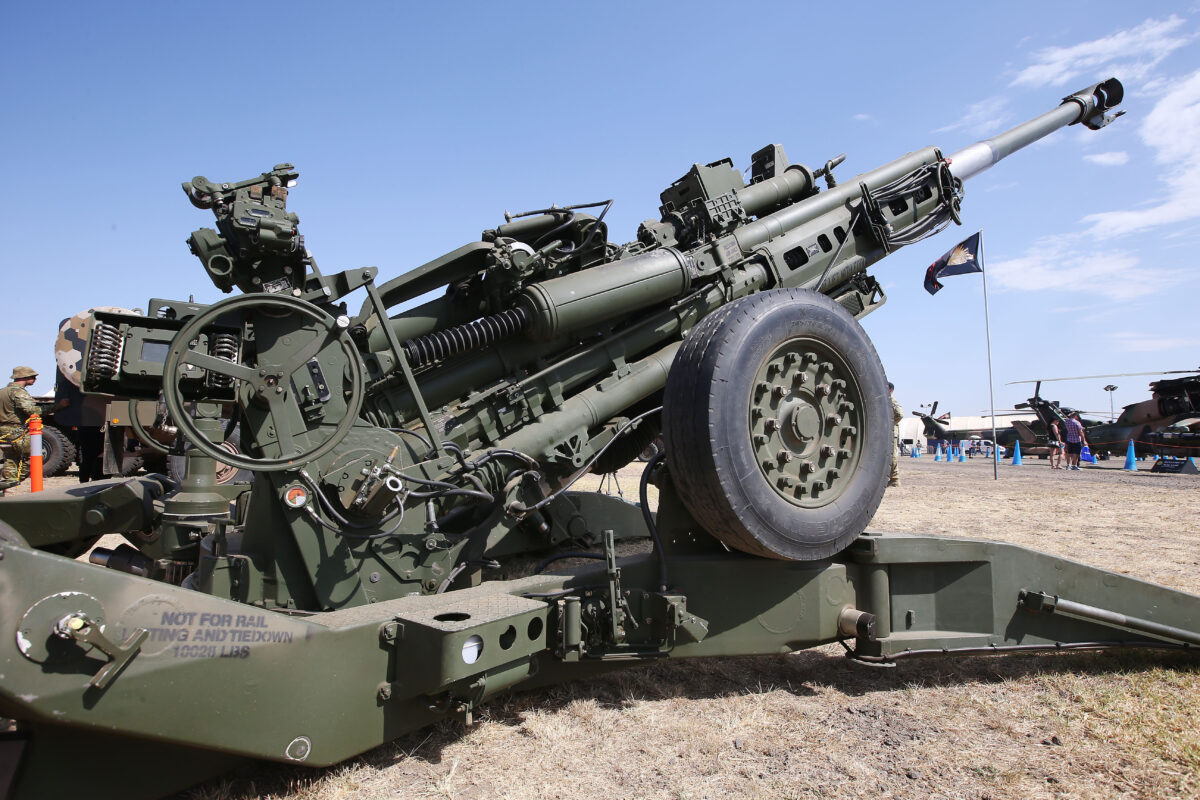 A M777A2 Howitzer at Avalon Airport in Melbourne, Australia, on March 1, 2019. (Michael Dodge/Getty Images)
A M777A2 Howitzer at Avalon Airport in Melbourne, Australia, on March 1, 2019. (Michael Dodge/Getty Images)
Missile defense is seen as a vital component to slipping past the guard of the well-positioned missile batteries of adversaries.
Network technologies are vital to tie together the multiple domains under one command.
Soldier lethality, as the name suggests, is the training and next-generation of weaponry given to the boots on the ground.
But modernization isn’t just about the shiny new toys, Smith said, and isn’t about following previous acquisition cycles.
Doctrines for What Doesn’t Exist Yet
The 2019 plan builds on the previous plan by laying out the framework for the doctrines, training, and concepts that will be needed to speed up the time from conception to use on the battlefield.
New equipment needs to be passed as soon as possible into the hands of soldiers and commanders who already know how to use it to the best advantage in the field, and have already been working with prototypes.
This is something new, Smith said.
“Talk to somebody about modernization prior to this, and they would think about whether you’re building a new thing,” he said.
“But not only do we have to field that improved materiel capability, but we also have to make sure that everything else that’s required for it—the doctrine, the training, and the strategy—is in place and synchronized.”
To carry out MDOs, the Army will not only need to reequip and retrain quickly but also reorganize the components of the battlefield.
During the focus on counterinsurgency, the basic operational unit of the Army shrank to the level of the brigade—between 1,500 and 3,000 soldiers—which was able to provide the mixture of specialist skills and equipment needed for operations in theaters such as Iraq and Afghanistan.
But a single brigade doesn’t provide the array needed to cut through multiple-domain standoffs.
“For the past 15 years, we’ve really been operating as a brigade-centric Army because we’ve been conducting counter-insurgency operating and stability operations,” Smith said. “MDO requires us to look more at division and corps.”
A division is typically made up of three or more brigades. And a corps is made up of between two and five divisions, with a total of between 20,000 and 50,000 soldiers.
According to the strategy document, the new MDO-capable force will “combine tailorable formations of networked manned and unmanned platforms, fires, electronic warfare, cyber, intelligence, surveillance, reconnaissance, engineers, sustainment, communications, and protection capabilities at all echelons, from squad to theater.”
First MDO Force Package in 10 Years
The Army will certify its first MDO package between 2026 and 2028, according to the modernization document, and then move on to the next one, which is set for completion by 2035.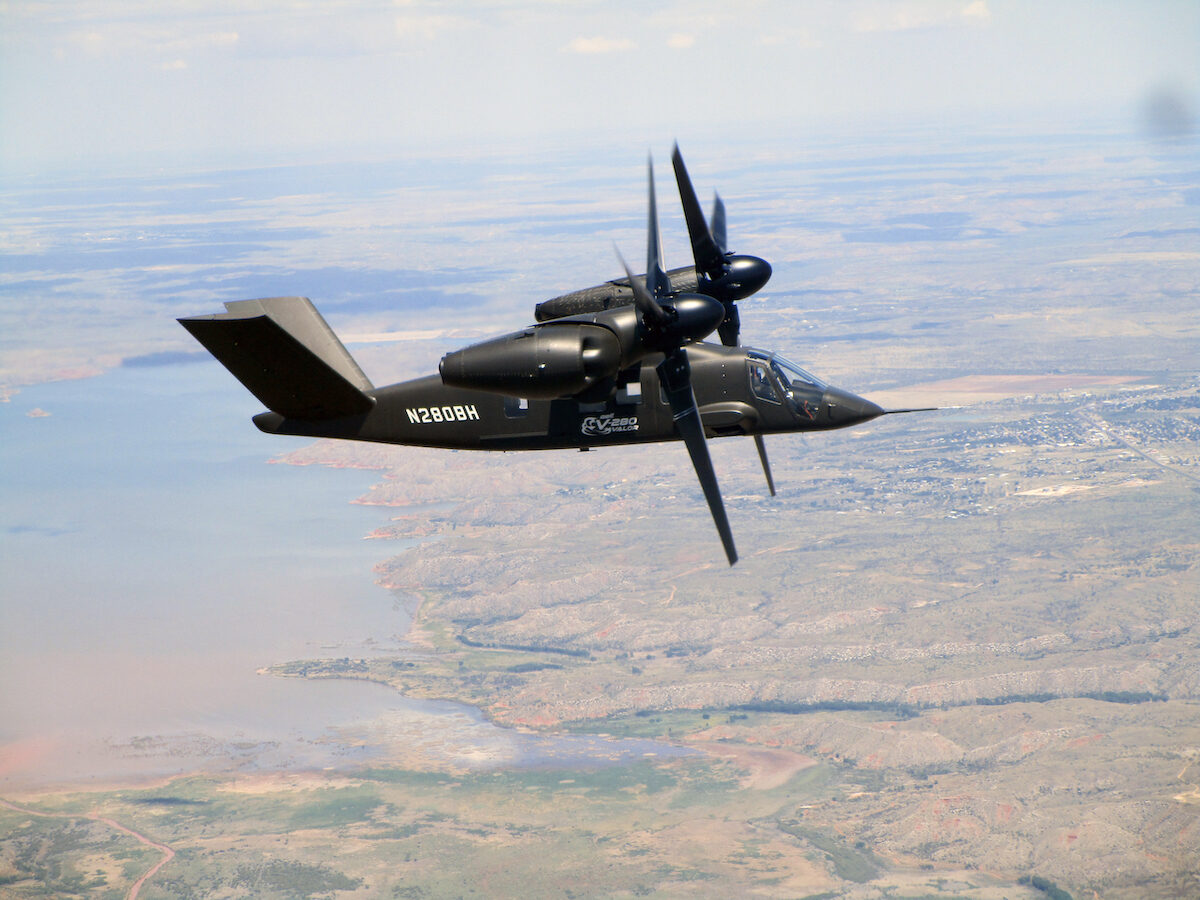 The Bell V-280 Valor participated in flight tests in Amarillo, Texas, in July 2018. (Photo courtesy of Bell)
The Bell V-280 Valor participated in flight tests in Amarillo, Texas, in July 2018. (Photo courtesy of Bell)
 The Bell V-280 Valor participated in flight tests in Amarillo, Texas, in July 2018. (Photo courtesy of Bell)
The Bell V-280 Valor participated in flight tests in Amarillo, Texas, in July 2018. (Photo courtesy of Bell)
In the meantime, the Army will begin fielding those six key elements by 2022. By 2025, the Army will adapt its formations to incorporate the new tech, and training will “meld sophisticated live, virtual, and synthetic environments.”
By 2025, training centers will also be updated to simulate MDO environments.
The Army has already realigned more than $33 billion to ensure adequate funding for the signature efforts of the modernization plan.
But while the plans set out concrete goals and a time frame for the first time, Smith is only too aware that the future is a fickle adversary.
“Modernization is a perpetual thing,” he said. “It’s constantly changing.
“It isn’t a lock-step plan that we are going to execute for the next 20 years. But it gives a road map that we can base decisions on today.”
Opening Up to the Tech Community
The AFC is reaching out to regular tech startups and taking on a risk-positive culture, ready to put prototypes in the hands of soldiers, to get their feedback.
“It’s one of the reasons the [AFC] headquarters was put in Austin, Texas, because that’s a big hub of innovation. So they have direct access to things coming out of academics, the university system, as well as a lot of tech innovators that start up there,” Smith said.
According to Smith, the thinking of the AFC is to get hold of the prototypes as quickly as possible. “Whether it’s from the startup innovators, or labs in tech companies, or labs in defense companies, let’s get our hands on it sooner, and then we can decide if this is something that we want to pursue.”
But the opening up toward the broader tech community isn’t so much a shift away from the current defense ecosystem, Smith said, but “opening up the net.”
“I would look at it more as leveraging our strength as a market-based, open society,” he said.
Other military analysts agree that such collaboration is the natural answer to China and Russia’s state-controlled tech enterprises.
“The U.S. Department of Defense has no choice but to draw upon the expertise and R&D of our own high-tech companies in the face of what China is doing with its numerous Fortune 500-level firms, many of which are directly owned by the Chinese Communist Party,” Robert J. Bunker, adjunct research professor at the U.S. Army War College Strategic Studies Institute, told The Epoch Times.
For now, despite the general consensus that China remains the longer-term adversary to U.S. military supremacy overall, Russia is the immediate technological “pacing threat,” according to the Army Modernization Strategy.
“The Russian military has made considerable progress in reviving its capabilities to wage modern war, and it has capitalized on operational lessons learned from Crimea, eastern Ukraine, and Syria,” the document states. “Russia has unveiled new capabilities such as the use of proxies, unmanned and robotic systems, precision strike weapons, and sophisticated cyber capabilities.”
China is projected to surpass Russia in the mid-to-long term “as our most capable threat.”
According to the report, “China is now conducting research into a wide range of militarily relevant technology including artificial intelligence, hypersonics, robotics, swarming, advanced materials, bio-engineering, quantum information sciences, space technologies, biometrics, and other areas.”
Many analysts blame the United States for becoming complacent after the Cold War and distracted by counter-insurgency efforts during the war on terror.
But Smith said the past 15 years are also a positive lesson about what the Army can achieve when it’s directed toward and focuses on a new challenge.
“I always prickle a little bit when people say we’ve fallen behind,” he said. “We’ve built the best counter-insurgency Army on the globe because we focused on it.
“Now we’re changing the objectives because the operational environment has changed. We have to reset the Army in terms of that new operational environment.”
No comments:
Post a Comment